Search
All results
(145)
MediaInfos
(30)
News
(1)
BasicInfos
(1)
Press kits
(1)
Biographies
(1)
Images
(100)
Publications
(4)
 Audi Tradition to commemorate numerous anniversaries in 2025
Audi Tradition to commemorate numerous anniversaries in 2025
Booklet features a selection of more than two dozen anniversaries The launch of the Audi A2 25 years ago; the first new Audi in post-war times 60 years ago; and Hans Stuck’s record-breaking exploits in the “world’s fastest road-going car” near Lucca 90 years ago
With the “Anniversary Dates 2025” booklet, Audi Tradition is showcasing the most important moments in the product and company history of Audi, which is as eventful as it is diverse. Audi historians have selected a total of 27 dates to commemorate in 2025.
Twenty-five years ago, the Audi A2 hit the market. With its aluminum body, it made a name for itself as a progressive compact car: light, aerodynamic, and economical. The Audi A2 polarized opinion with its design and unusual proportions; the concept was ahead of its time. However, sales remained below expectations, and Audi ended production after roughly five years and 176,377 units built. Since then, the A2 became a fan favorite and is now a sought-after collector’s item. Sixty years ago, the first post–World War II Audi rolled off the production line. With the “Auto Union Audi” vehicle, Auto Union GmbH revived the tradition-steeped Audi brand name in 1965. The new name was meant to show that this car represented a fresh start for Auto Union in terms of technology. The Audi was the first car from the brand with four rings to feature a four-cylinder four-stroke engine, and it marked the beginning of a new era in Ingolstadt. Twenty years later, on January 1, 1985, Audi NSU Auto Union AG was renamed AUDI AG, and since that time, the company and its products have shared the same short, memorable name. Ninety years ago, in February 1935, a spectacular attempt to break speed records took place in Italy. After test drives in October 1934 with the Grand Prix racing car on the AVUS in Berlin, the Auto Union racing department started developing the vehicle that would later be known as the “Lucca” car.
 Audi Tradition launches its 2025 event season
Audi Tradition launches its 2025 event season
Trade shows, rallies, festivals, model car markets – Audi Tradition showcases itself to fans at a variety of events Lectures, events, and special exhibits at the Audi museum mobile and at the Audi Forum Neckarsulm
Audi Tradition will be attending numerous events again this year and celebrating many anniversaries. It has been 60 years since the Audi brand name was reintroduced. In 1965, the company “with the four rings,” then still called Auto Union GmbH, ended its two-stroke era, introduced a new model with a four-cylinder four-stroke engine, and named it – Audi. This first post–World War II Audi can be viewed along with other vehicles from the historical AUDI AG collection, for example, on International Museum Day on May 18, in Ingolstadt. What’s more, this year, the Audi museum mobile is celebrating its very own anniversary on Museum Day: its 25th birthday.
The annual program gets underway with the Bremen Classic Motorshow (January 31–February 2). There, Audi Tradition will commemorate the 25th anniversary of the launch of the Audi A2 and will show a polished aluminum version of the model to mark the occasion. Audi Tradition will also be on hand to answer questions at the Volkswagen Group’s joint stand in Hall 5 for visitors interested in the range of spare parts. On the same weekend, two-time German rally champion Harald Demuth will pilot a 1984 Audi Sport quattro Rallye at the FAT ICE RACE in Zell am See, Austria (February 1).A desert car on ice: Jutta Kleinschmidt, who in 2001 became the first and to date only woman to win the Dakar Rally, will drive the Audi RS Q e-tron, the car that won the 2024 Dakar, in Zell.Action on the ice continues three weeks later in St. Moritz at The I.C.E. concours d’elegance (February 21-22) where Tom Kristensen will present the Audi quattro Group S, built in 1986, on the frozen Lake St. Moritz.
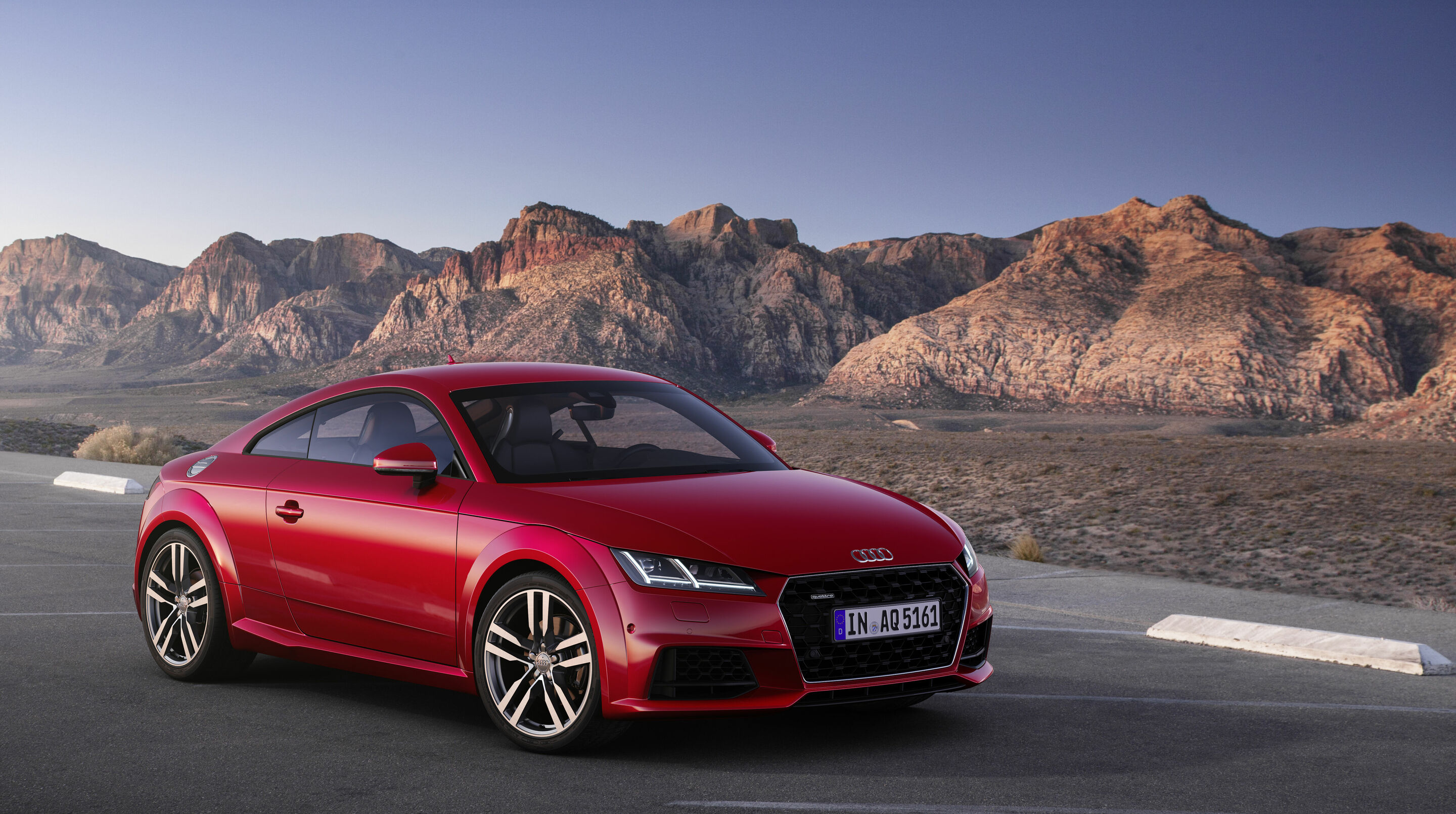
Successful for decades: 662,762 units across three generations built over 25 years Design inspired by Bauhaus: every shape has a clear function Vorsprung durch Technik: New technologies launched with the TT, including Audi magnetic ride, Audi virtual cockpit, and OLED technology
A quarter of a century of TT history: When Audi presented the concept car at the IAA in 1995, public opinion became clear right away: “This car should be mass-produced – exactly as it is!” With the series debut in 1998, the Audi TT wrote design history and was built across three generations as a Coupé and Roadster.
With a vision of “a car for enthusiasts,” Audi presented the Audi TT Coupé as a sports car concept at the IAA in Frankfurt in the fall of 1995. Shortly afterward, the decision was made to mass-produce it. Torsten Wenzel, the exterior designer at Audi who helped introduce the study to series production, recalls: “To us, the greatest praise was when the trade press noted appreciatively that not much had changed from the concept to production model, although we did, of course, have to adapt many details due to the technical specifications for the production version, including the proportions.” Most noticeable was the integration of a rear side window, which elongated the car’s profile and increased the sports car’s dynamics. For Wenzel, the TT remains “a driving sculpture, with highest-quality surfaces and lines.” The body of the Audi TT appears to be made from one piece, Wenzel says, and the front end without traditional bumper overhangs emphasizes its distinctive shape. Another design element contributes to the unmistakable silhouette of the Audi TT Coupé: the circle – “the perfect graphic shape,” as Wenzel describes it. Numerous circular elements inspired the sports car’s exterior and interior design. Inspired by Bauhaus, every line in the Audi TT has a purpose, every shape a function. “At Audi Design, we always follow the philosophy of ‘less is more.’
 After “Windschnittig” comes “Form vollendet”: A new special exhibition at the Audi museum mobile
After “Windschnittig” comes “Form vollendet”: A new special exhibition at the Audi museum mobile
Aerodynamics in automotive manufacturing from 1945 to the present day: from concept cars and record-breaking models to race cars and the Cd world champion, the Audi 100 Almost 30 exhibits feature in a special exhibition from July 25, 2024, to March 2, 2025
Audi wrote engineering history in 1982 with the Audi 100. With its drag coefficient of 0.30, the third-generation Audi 100 was the world’s most aerodynamically efficient production saloon at the time, making it an essential part of the new special exhibition "Form vollendet". The new special exhibition will be at the Audi museum mobile in Ingolstadt until March 2, 2025, where Audi Tradition will present aerodynamic concepts from 1945 to the present day.
The aerodynamics research that flourished before the Second World War and which was the subject of Audi Tradition’s “Windschnittig” exhibition (German for “streamlined”) that ran until the end of June received little attention after 1945. Europe’s automotive industry was busy getting back on its feet. During this period, pre-war developments were still in use and improved upon. It wasn’t until the rising cost of fuel during the 1973 oil crisis prompted a shift in thinking that automotive engineers began focusing on reducing fuel consumption. One of the dials used to achieve this was aerodynamic drag. In 1982, Audi made a splash with the Audi 100; its drag coefficient of 0.30 set a world record for production sedans, a value that would become the benchmark for years to come. The new Audi Tradition special exhibition “Form vollendet” (German for “form perfected”) showcases the Cd world champion Audi 100 alongside other models such as the NSU Ro 80, the Porsche 356, the Lamborghini Countach, and the Ducati Paso 950.
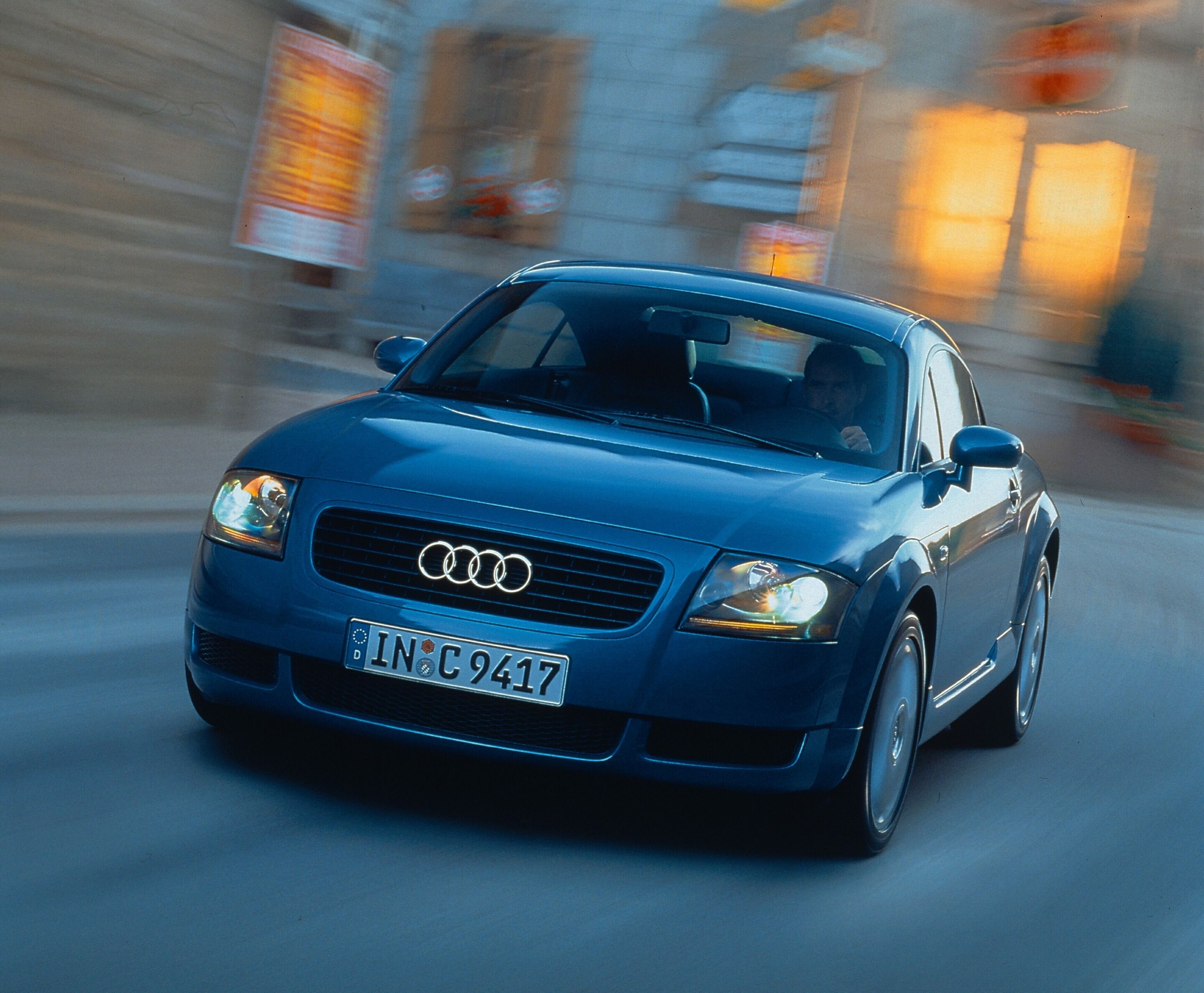 A timeless design icon: The Audi TT turns 25
A timeless design icon: The Audi TT turns 25
Inspired by Bauhaus: Coupé study from 1995 began series production in 1998 178,765 first-generation Audi TT Coupés had rolled off the production line by 2006 Audi designer Torsten Wenzel introduced the study to series production: “The Audi TT is a driving sculpture”
Twenty-five years, three generations: The brand with the four rings wrote design history with the Audi TT. Since its debut in 1998, the sports car has struck a chord with people worldwide thanks to the fun it promises drivers and its clear design language. „Auto Europe“ voted it the best new car of the year in 1999.
In the mid-1990s, the Audi A8 luxury model elevated the Audi brand to a higher position and gradually led to the renaming of the model series: The Audi 80 became the Audi A4, and the Audi 100 was dubbed the Audi A6. Introduced in 1994, the Audi A4 was the first model to embody Audi’s new design language. Next was the Audi A3 premium compact car, launched in 1996, and the second generation of the Audi A6, introduced in 1997. In the course of emotionalizing the brand through a fresh, progressive design, American designer Freeman Thomas, under the then Head of Design Peter Schreyer, created a puristic sports car in the Audi TT Coupé. Audi presented the study to an enthusiastic trade show audience at the IAA in Frankfurt in September 1995. The model name “TT” is reminiscent of the legendary Tourist Trophy on the Isle of Man, one of the oldest motorsports events in the world and one where NSU and DKW celebrated great successes with their motorcycles. The name “TT” also recalls the sporty NSU TT of the 1960s. The Audi TT Coupé’s deliberate departure from the usual Audi nomenclature underscored the complete novelty of the model. Designer Wenzel: “In the Audi TT, every shape has a clear function” In December 1995, the decision was made to mass-produce the Audi TT Coupé.
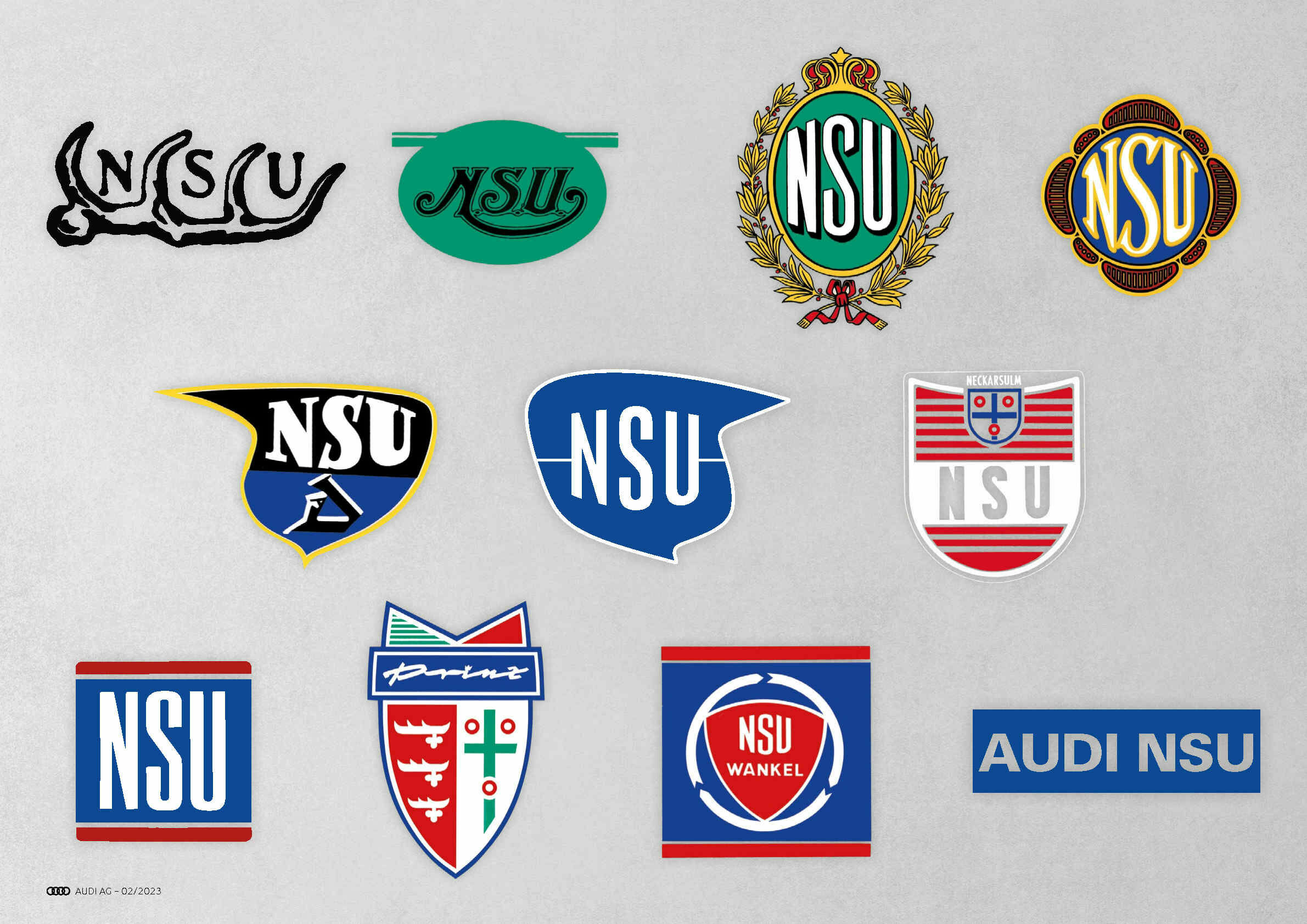 The traditional NSU brand and the Audi Neckarsulm site: 150 years of innovation and transformation
The traditional NSU brand and the Audi Neckarsulm site: 150 years of innovation and transformation
In the anniversary year of 2023, Audi Tradition will bring out a number of NSU highlights from AUDI AG’s historical vehicle collection for events. Ten-part series with classic and exotic cars from NSU’s product history
The traditional NSU brand is celebrating its birthday. In 1873, Christian Schmidt and Heinrich Stoll founded “Mechanische Werkstätte Schmidt & Stoll” in Riedlingen for the production of knitting machines, which later evolved into NSU Motorenwerke AG and ultimately into today’s Audi site in Neckarsulm. Even NSU’s name is closely associated with Neckarsulm, as the company name is derived from the city on the Neckar and Sulm rivers. NSU impressively demonstrates the development of mobility – from bicycles and motorcycles to automobiles. For its 150th anniversary, Audi Tradition is bringing out a number of NSU highlights from its historical vehicle collection. The special exhibition “Innovation, audacity and transformation”, a cooperation project between Audi Tradition and the German Bicycle and NSU Museum (Deutsches Zweirad- und NSU-Museum), is also under construction. The exhibition will be on display at the Audi Forum in Neckarsulm and at the German Bicycle and NSU Museum in Neckarsulm starting on June 14.
“There are so many stories to tell from the long history of NSU,” said Tobias Fräbel, an employee at Audi Tradition responsible for the corporate archives of the Neckarsulm site and the NSU brand. “Since we can’t tell all the stories in just one text, Audi Tradition will offer stories and background information about the company, its products, its involvement in racing and much more throughout the year.” These posts can be found on Audi Tradition’s Instagram channel and in the Audi MediaCenter. There, Audi Tradition will launch a ten-part series. From March to December, one NSU model will be introduced every month – from the brand’s classics, whether they have two or four wheels, to prototypes and exotic models.
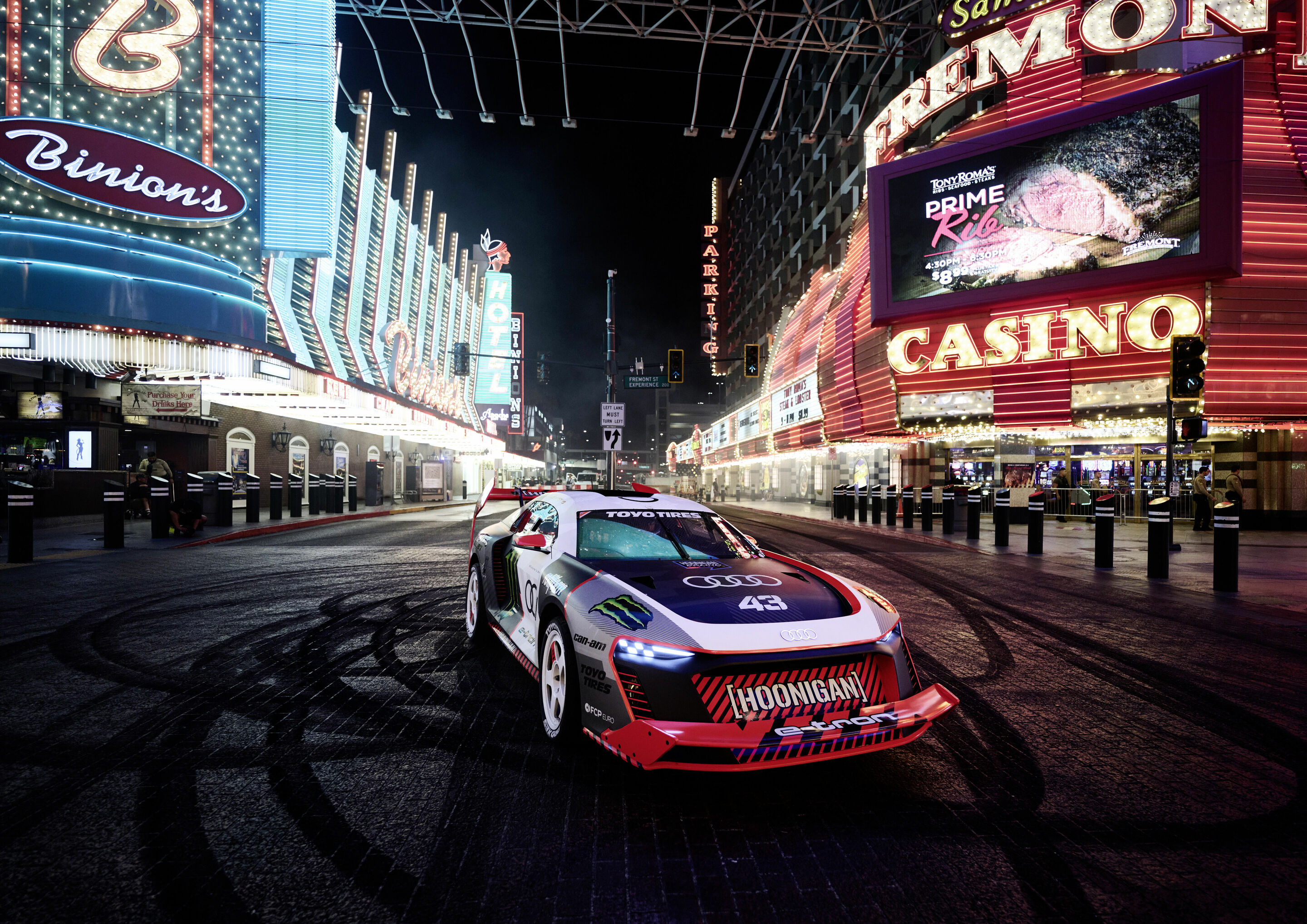 Ken Block and the Audi S1 Hoonitron electrify Las Vegas
Ken Block and the Audi S1 Hoonitron electrify Las Vegas
Electrikhana film featuring US drift artist celebrates world premiere All-electric prototype developed and deployed by Audi Sport Spectacular shoot in Las Vegas with motorsport icons from Audi
When US drift artist Ken Block releases his long-awaited Electrikhana video today, the Audi S1 Hoonitron will be featured as one of the principal performers: Developed and assembled at Audi Sport in Neckarsulm, the all-electric prototype that was styled by Audi Design taking cues from an Audi icon thrills viewers. The link to the film: YouTube.com/thehoonigans
A drift along the famous Eiffel Tower, a spectacular jump from the parking deck of a neighboring hotel, or donuts on the legendary strip in front of spectating Le Mans legend Tom Kristensen: Ken Block, the Audi S1 Hoonitron, and other models from Audi Tradition’s collection of treasures made a splash during the night-time film shoot in Las Vegas. The US star in the Audi S1 e-tron quattro Hoonitron electrified the gambler’s paradise in Nevada’s desert for several days. Now Ken Block has released the cinematic product. “With the S1 Hoonitron we broke entirely new ground at Audi,” says Oliver Hoffmann, Member of the Board for Technical Development at AUDI AG. “Developing a fully electric prototype for the unique requirements of our partner Ken Block was a big and exciting challenge to which the whole team rose with flying colors. It is great to see how ‘Vorsprung durch Technik’ is presented in an all-new environment.” The Audi S1 Hoonitron has two electric motors, all-wheel drive, power galore, a carbon fiber chassis, and fully complies with the safety standards of the FIA, motorsport’s governing body. Audi Sport developed it as a one-of-a-kind car exclusively for Ken Block. Its body shell, for which Audi Design led by Marc Lichte is responsible, immediately evokes memories of the legendary Audi Sport quattro S1 with which the four rings charged to the top in the famous Pikes Peak hill-climb race.
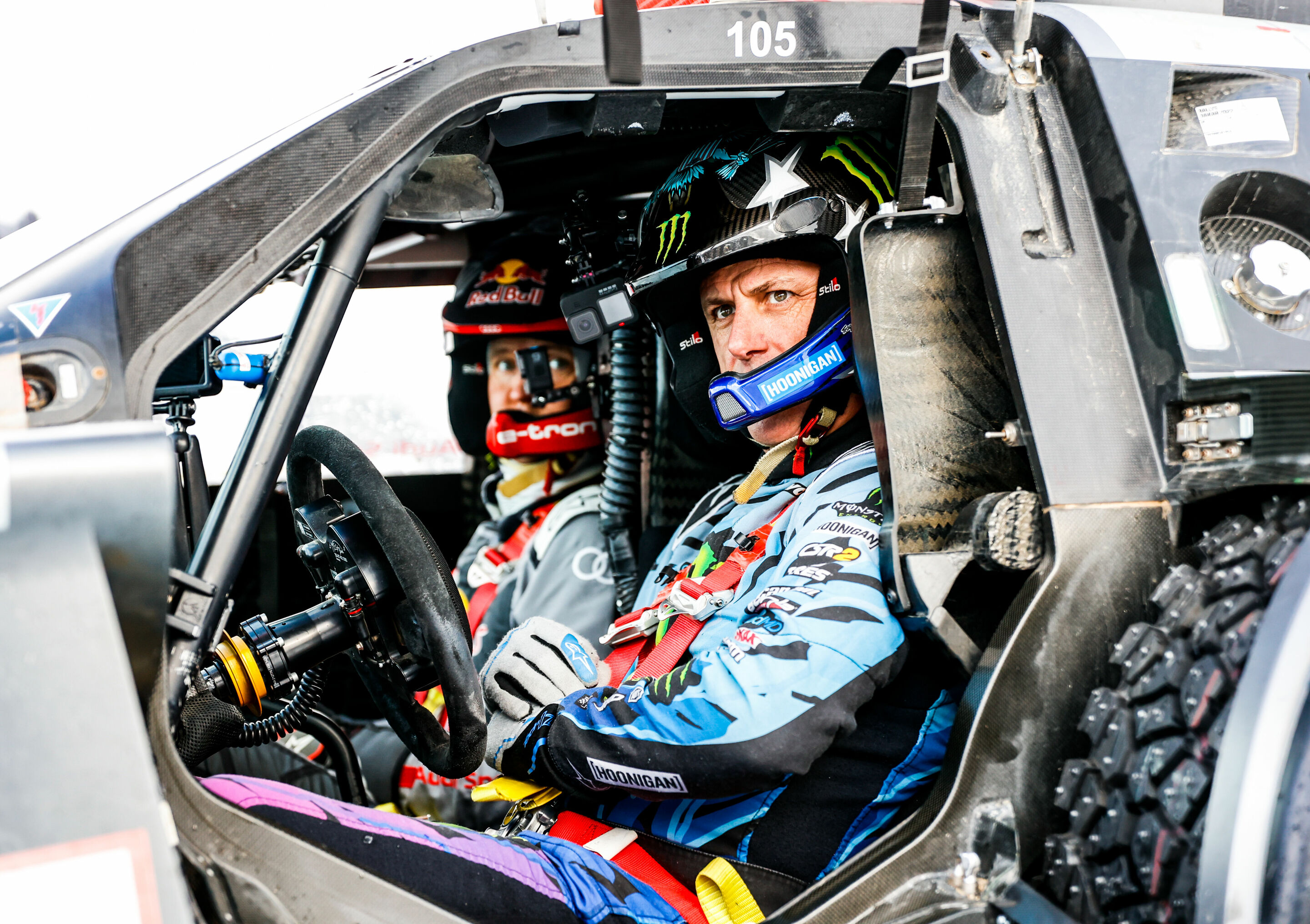 Ken Block thrilled with the Audi RS Q e-tron
Ken Block thrilled with the Audi RS Q e-tron
US drift artist drives Mattias Ekström’s Dakar car Historic treasures from Audi Tradition at the GP Ice Race Ken Block: “A phenomenal experience”
This was a car swap of a very special kind: with Mattias Ekström as the instructor in the co-driver’s seat, Ken Block tested the Audi RS Q e-tron with start number 224 on snow and ice. The outing during the GP Ice Race in Zell am See (Austria) was the spectacular prototype’s first appearance after its successful debut in the famous Dakar Rally.
The Audi RS Q e-tron, with which Audi clinched four stage victories in January, was just one of the stars on the icy course in Zell am See. Audi Tradition also brought along the Audi quattro A2 Group B rally car, which competed in the 1983 Rally Finland. In addition, a DKW F 91 and a DKW Hartmann Formula V caused quite a stir. For Ken Block, the weekend trip to Europe was like a visit to automotive paradise. “The laps in the Audi RS Q e-tron were a phenomenal experience – even though the car probably feels more comfortable in the desert than in the snow,” said Ken Block. “Thanks to Mattias Ekström, who patiently explained all the special features of his car to me. A few minutes behind the wheel was enough to understand the fascination of this car.” Mattias Ekström was impressed. “It only took three turns for Ken to get fully up to speed,” said the Swede, who, with ninth place, was the most successful Audi driver in the 2022 Dakar Rally. For Ekström, the event in Austria was also the perfect preparation for his participation in the prestigious “Race of Champions”, which was held in the north of Sweden last weekend. Ekström only had to admit defeat to the eventual winner Sébastien Loeb in the semifinals. In addition to testing the Audi RS Q e-tron, Ken Block also took a little trip down memory lane and drifted around the circuit in the Audi quattro A2.